Operations Management Assignment: Case Analysis Of Walmart & Project Management
Question
Task:
Operations Management Assignment Task – 1: Read the following Scenario, and prepare a report.
Scenario: The learner is acting as an internal Operations Management expert for a chosen organization (ideally a fortune 500 organisation delivering products or services). Learner is required to look at existing operations management & quality management processes, procedures & systems within the organization, &, evaluate competitiveness of the organization in achieving key strategic objectives both in the domestic and global contexts. Where required, compare with other best-in-class organizations to further support your responses to the different parts of the report.
Operations Management Assignment Task - 2: – Project Management using Program evaluation and Review technique (PERT) and Critical path method (CPM)
Based on the project scenario given below, answer the following questions
Scenario: Your organisation, ABC construction group has made a winning bid to construct a new manufacturing plant. The client expects the plant to be functional within a year. You are assigned as the Project Manager to ensure that the whole project stays on schedule. The two important conditions as per the client contract are: -
- ABC construction group will incur a penalty if the work is not completed by the deadline of 47 weeks from now.
- ABC construction group will be provided additional incentive if the work is completed within 40 weeks.
The table below describes the activity list for ABC construction group for this project:-
|
Activity |
Description |
Immediate predecessors |
Estimated duration |
|
A B C D E F G H I J K L M N
|
Excavate Lay the foundation Put up rough wall Put up the roof Install exterior plumbing Install interior plumbing Put up exterior siding Do exterior painting Do the electric work Put the wallboard Install the flooring Interior painting Exterior fixtures Interior fixtures |
- A B C C E D E,G C F,I J J H K,L |
2 weeks 4 weeks 10 weeks 6 weeks 4 weeks 5 weeks 7 weeks 9 weeks 7 weeks 8 weeks 4 weeks 5 weeks 2 weeks 6 weeks |
(Source: - Turner, 2016)
For any given activity, its immediate predecessors (as given in the third column of Table) are those activities that must be completed by no later than the starting time of the given activity. (Similarly, the given activity is called an immediate successor of each of its immediate predecessors.) For example, the top entries in this column indicate that:-
- Excavation does not need to wait for any other activities.
- Excavation must be completed before starting to lay the foundation.
- The foundation must be completely laid before starting to put up the rough wall, etc.
When a given activity has more than one immediate predecessor, all must be finished before the activity can begin. In order to schedule the activities, you have consulted with each of the crew supervisors to develop an estimate of how long each activity should take when it is done in the normal way. These estimates are given in the rightmost column of Table. Adding up these times gives a grand total of 79 weeks, which is far beyond the deadline for the project. Fortunately, some of the activities can be done in parallel, which substantially reduces the project completion time.
Given all this information, please develop answers to the following questions: -
- Develop a project network diagram to visually display the whole project and describe the project network diagram–
- Schedule the whole project with PERT/CPM. In doing so, you must be able to satisfy these crucial objectives: -
- Total time required to complete the project if no delays occur
- The start and finish of individual activities to meet the project completion deadline
- The start and finish of individual activities if no delays occur
- Critical activities where any delays must be avoided to prevent delaying project completion
Answer
Executive Summary
The study considered to prepare the current operations management assignment signifies that the retail industry and globalization are significantly interrelated and extensively depend on streamline supply chain and operational excellence of the organization while considering organisational infrastructure, availability of resources and data-driven management system. Walmart Plc has been considered the best retail company that provides extensive services across the globe and intends to improvise its collective cost leadership generic strategy to attract a higher range of customers while synchronizing collaborative, forecasting, replenishment system and operational capabilities. This systematic empirical framework describes the symbolic operational excellence of Walmart and discusses the role of ICT applications and artificial intelligence to extensively improve operation management within Kuwait. The study also provides extensive recommendations for Walmart to ensure productivity and profitability within the retail industry.
Introduction and organizational objective
Walmart Inc is an American multinational that mainly operates a whole chain of supermarkets and acts as discount stores for grocery and different other products. The company was founded by Sam Walton and it owns and operates Sam's Club retail warehouses. This company is the largest by revenue and it adds to Fortune leading 500 lists in 2019 (corporate.walmart.com, 2020). Moreover, this is the largest employer in the world. In the year 2019, the company was the largest grocery retailer in the US.
In the era of competition, the company aims to provide equal merchandise and at an affordable rate to the consumers. This helps in their operation and their strategy to maintain a relationship with clients help them to generate business in different countries. Their main objective that focuses on their operation is efficient logistics that require high-end technology and inventory management systems so that cost is reduced and gradually passed to consumers. The objectives that link to quality process and operation are mainly sustainable creation of economic value and enhancement of affordable food to people throughout the world.

Figure 1: Walmart Storefront Logo
(Source: Bloomberg.com, 2019)
Review of Walmart's Operation Strategy and Implemented Solutions
Since the globalization of economy and technological advancements, Walmart has gained enormous reputation and flexibility, and secured high revenue streams and productivity indexes, streamlining operational excellence and disruptive innovations. Walmart has effectively incorporated multistage operational strategies including cost leadership, multi-domestic subsidiary and relationship-driven approaches to comply with organizational objectives. As a prominent property to cost leadership generic strategy, Walmart significantly improved supply chain, inventory stocks, integrated information system and customer services to maximize productivity and control price mechanisms and customer satisfaction attributes (Attaran and Gunasekaran, 2019). Data-driven management system, creation of multi-generational and multilingual workforce, concurrent integration of industry-specific technologies and value-added services have amplified organizational capabilities and resources allocation to gain competitive advantages and differentiate capabilities.
The company adequately confined total quality management and fact-driven entrepreneurship practices to enhance quality assurance capabilities and improve ROI, revenue per sales, stockout rate and duration of order filling. However, fluctuating global economy, supply chain disruptions, intensified market competitiveness and changing consumer behaviours have created comprehensive limitations to maintain cost leadership strategies. Implementation of long-term solutions including diversified workforce, egalitarian culture, innovative R&D pipelines, customer-focused and seasonal discounts and integrated information, along with short-term initiatives including ICT training, dedicated maintenance team and energy-efficient transportation services and schedule flexibility have assisted Walmart to mitigate challenges (Panigrahi et al. 2018). However, to minimize contemporary business threats, Walmart brought concurrent changes in operational decision areas and organizational infrastructure to prioritize for-profit objectives and corporate goals. Walmart successfully implemented key operations management decisions to mitigate corporate objectives through a combination of holistic approaches that facilitated to emphasize inventory management, supply chain, sales and marketing initiatives.
In order to prevent these issues with supply chain disruptions and communication problems due to workforce diversity, other organizations mainly focus on the intrinsic factors. The Apple Inc is a well-known brand worldwide which focuses on ensuring high employee motivation in order to achieve their goals (thestreet.com, 2020). As Walmart provides ICT based training to employees for better performances, brands such as Apple Inc focus on training processes better teamwork and brand developmental benefits. These training processes contribute to changes within the mindsets of employees and thus contributes to positive effects on brand efficiency.
Design of Good and Product
Walmart has effectively involved strategic characterization of products through its brands of goods including Great Value and Sam's Choice to provide extensive retail services as per consumer demands. These factors are influenced by addressing the prominent design of retail services by emphasizing service efficiency and cost-effectiveness. To substantially maintain cost competency and it's cost leadership generic strategy, Walmart has effectively assured efficiency of retail service personnel, low-cost production process and product design capabilities (Martino et al. 2017). Data-driven inventory management, regional subsidiaries and retail chain, localization of products and availability of expertise have facilitated Walmart to minimize stockout rate and order filling duration globally.
Supply Chain Management
Walmart significantly improved its distributed information system network to streamline supply chain management practices within its global supplier network. Integrated information systems, open-door communication and collaboration with suppliers, retail stores and vendors have assisted to minimize operational costs and timelines while improving merchandise movements, transportation services and reducing high fuel consumption, empty running hours with significant bargaining power and global presence (Smith, 2019). Its concurrent brand loyalty, customized marketing strategies for foreign markets, regional supply chain and organizational capabilities influence suppliers to incorporate centralized information systems to streamline operational excellence and revenue streams within the global economy.
Quality Management
To comply with ISO quality standards and regulatory compliances, Walmart introduced three-tier of quality standards including minimum quality expectations, market average quality standards and high-end specifications to mitigate quality assurance and customer satisfaction. For low-cost demands, the company extensively addresses customer demands with the Great Value brand (Heller, 2017). Improvement of stock infrastructure, automated temperature controlling systems and adequate ICT based employee training programs has enhanced its quality control actions. Various corrective measures including product prioritization, value-added criteria, multilayer supply chain, lean manufacturing principles and development of extensive portfolios helped to ensure productivity and profitability. Walmart has effectively gained market insights and reorganized retail practices to become multinational corporations.
Inventory Management
Inventory issues significantly affect business operations due to unavailability of products, delivery delays, high stockout rate and cancellations of supplies. To encounter such contemporary challenges, Walmart incorporated a vendor- managed inventory model as a systematic empirical framework to control flow logistics, goods and resources while considering real-time data and inventory levels to diminish stockouts. Just-in-time and cross-docking model-assisted to minimize stock sizes to amplify centralized cost-minimization strategy globally. These processes are also used by a large number of companies for ensuring efficient operations. Global organizations such as Samsung, Apple, Walmart and more focus on proper inventory management in order to ensure the provision of proper services based on the demands for various products. These processes are highly efficient for all organizations and can lead to improved performances for Walmart.
Location and Multidomestic Strategy
Productive location strategy allowed Walmart to emphasize the efficiency of goods movements and HRM practices and sustainable transportation services. Most of its retail stores are located near urban centres across the globe that facilitate to enhance market reach. Integrated regional warehouse, modifications in sales strategies, localization of products and regional employment principles have provided ample opportunities to ensure productivity and efficiency in the global context (LV, 2019). Internet-based monitoring, transparent employee engagement policies and lean production principles have fueled its operational excellence.
Layout and Capacity Design
Walmart effectively uses artificial intelligence, IoT and business analytics to evaluate consumer behaviours and corporate standards to maximize layout design efficiency through the systematic placement of goods. Significant employee engagement, behavioural analysis and interpretation of resources have facilitated Walmart to improve forecasting consistency, continuous monitoring algorithms and data-driven inventory management. These decisions are significant to emphasize cost-effectiveness and cost-minimization strategy.
Human Resources and Job Schedule
As Walmart significantly affected and criticized for high employee turnover and low-wage policies, the company implemented continuous recruitment as an HRM strategy to satisfy the cost leadership strategy. They also recently focused on competitive compensation packages, ICT based training facilities, and transparent recognition and rewarding schemes to attract and retain expertise and top talents (Vasantham et al. 2017). Corrective safety measures, standardized job positions and flexible schedules have enhanced its business excellence and competitiveness.
Role of ICT applications in Competitive Advantages
The revolution of internet, information technology and industry-specific innovations has become an integral property of modernized commercial ventures. Extensive incorporation and implementation of modernised innovations including artificial intelligence, IoT, business analytics, robotics and automation alongside centralized management software solutions and cloud computing are significantly important for Walmart to improve organizational performance, leveraging information analysis and cost-effectiveness. As intense competition and e-commerce solutions are creating comprehensive limitations, Walmart improved its distributed information system and widely used ICT applications to control personalize communication, timely delivery, R&D pipelines, access to untapped markets and provide new services (Abdullah and Saleem, 2016). However, to eliminate complexity, inventory costs and waste, ICT applications can facilitate Walmart to gain new perspectives, enhance product differentiation, streamline operations, lower costs and improve decision-making capabilities.
Communication and Collaboration
As Walmart's business development extensively demands on suppliers, logistics and supply chain attributes, integrated information technologies can facilitate the company to improve communication and collaboration with regional warehouse, subsidiaries and retail stores to improvise eco-friendly practices, entrepreneurial skills and productivity index. Availability of distributed networking systems, email servers, routers and intranet billboards and chat services allows developing better and rapid communication alongside dissemination distribution channels, schedule and critical business information flow (Agrawal and Mittal, 2018). These ICT applications are significant for Walmart to cope with the shortage of resources, stock-outs and legal obligations.
Strategic Thinking
Industry-specific innovations and ICT applications are designed to enhance a company's competitive advantages over competitors by facilitating strategic thinking and knowledge transfer. As Walmart engages millions of consumers worldwide, business analytics and big data analytics can be significant to analyze consumer behaviours and purchasing influences. IT also allows developing cheap digital marketing campaigns and online customer services through feedback loops and extensive engagements (Yunis et al. 2018). Significant social presence and social media platforms can facilitate Walmart to assemble, interpret and transfer knowledge to a wide consumer base. ROI, sales transactions, review mechanism, revenue streams and futuristic advancements can be analyzed by ICT applications.
Stores and Safeguard Valuable Information
An information system is an integral property of Walmart's business as it works as a systematic domain to improve business processes and organisational competency. As Walmart confines valuable consumer information including credit card details, personal information, sensitive business information, financial implications and investments details, IT provides various protective measures to store, share and protect through encryption algorithms and multilayer security patches. Cloud-based storage and data handling capabilities allow companies to effectively analyze market conditions, emerging trends and consumer merchandise and purchasing behaviours.
Costs Control and Waste Management
ICT based training programs and extremely integrated distributed networking systems can facilitate Walmart to reduce overhead costs and scalability of expenses by leveraging techno-centric visionaries to streamline day-to-day operations. Automation and robotics help to control inventory and production scales, and assists to provide a legitimate environment for product quality and protection. Cold storage services, food preservation and restoration safety policies can be justified by incorporating ICT applications that significantly enhance competitive edges and allow marinating cost leadership generic strategy. Streamlined supply chain management and effective implementation of IT helps to prevent losses and provides ample opportunities to improve decision-making abilities.
Tools and techniques that contribute to achieving organizational objective
Tools of operation management
Pareto Chart: Pareto Chart is a graph that mainly indicates the frequency of defects and their cumulative impact on the organization or operation of the company. This is very helpful to find out problems so that they can be prioritized to observe the highest overall improvement. These charts are used mainly for decision making in the quality and operation sector. In the global aspect or domestic context, this Pareto chart can help in operation or quality control. This turns out that the 80/20 rule can be applied in operation management because, in the business of Walmart, 80% of the revenue comes from 20% of customers and product selling (walmart.com, 2020). This tool is an important aspect of the total quality management of the company and helps in analyzing the reasons for the failure of the company. For instance, in Germany, Korea and Japan, the company could not dig out its market and turned out to be the greatest failure concerning competition, culture and supply chain (Ahmad and Hasan, 2016). This supply chain and competition could have been sorted out with Pareto analysis where they would have been able to identify their reason for failure. Similarly, it is not possible to attract Kuwait people with American Style trading. This might lead to failure of the company in Kuwait if they do not involve Pareto for understanding operation theme, management and culture along with quality. It is very important to collect data and determine cause and measurement before jumping into the time frame. Final analysis can help to understand the cumulative percentage of operational improvement.
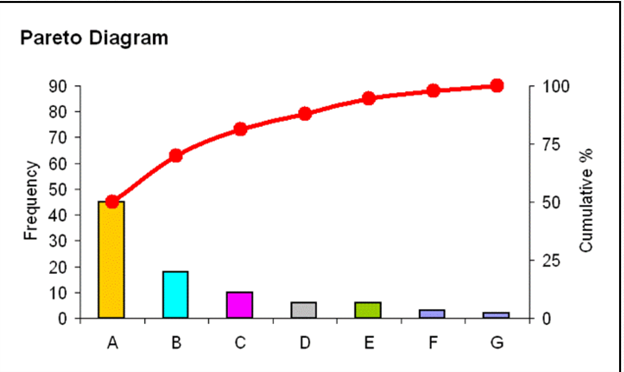
Figure 2: Pareto Diagram showing continuous quality improvement
(Source: Ahmad and Hasan, 2016)
Control Chart: Statistical process control stands as a statistical technique that is used for controlling and monitoring the quality process and operation of a company. The most common tool is the control chart that is a line diagram and it shows a particular measurement that must be taken. This tool is a visual tool that helps in monitoring the performance as per expectation. Mostly, the recorded data helps to calculate upper and lower limits of control. In Wal-Mart, both domestic and global sections measure their fall that is outside the limit (Li et al. 2017). In case there is an indication where it shows an issue has arisen in the process the management needs to take action.
Six sigma: This is a management tool and data-driven methodology that helps in improving business processes and helps in enhancing the quality of products (Laureani and Antony, 2018). This strategy seeks to improve the quality of the output of the organization and removes any major issue or cause of the defect. In Walmart, it is very important to use six sigma since there is a tendency of variability in manufacturing and business processes since they are involved in the delivery of food products. Each six sigma project that is carried out in Walmart follows defined sequences of different steps and targets the value increment of time frame, pollution reduction, consumer satisfaction and profit. To increase financial situation and competition through the satisfaction of objectives, this six sigma acts as a continuous process of achievement of financial returns and passionate management leadership.
The methodologies of six sigma are mainly DMAIC and DMADV and respectively they help in improving the existing business process and create a new process for products and control. Walmart uses the five whys strategy that helps them to understand the root cause of failure in respect to competition, production and operation.
Just In Time (JIT): The JIT inventory system is a management strategy that aligns the whole production with raw material orders from different suppliers (Jeong et al. 2016). The companies employ this Just in Time methodology to increase efficiency or decrease waste through receiving of goods. These goods are required at the time of production and there is no wastage as a result of which there is low inventory cost. This strategy requires production for forecasting demand perfectly. This process is known as the Toyota manufacturing process because this is used in the car manufacturing process. Similarly, this can be used in any manufacturing process and Walmart can use this process for increasing their production. The main success of this procedure lies in steady production, high-quality manpower, no breakdown of machines and proper reliable suppliers. This would enhance the possibility of production and it helps the company to fight against the competition through accurate production. As stated by Erdil, (2018), competitors of Walmart like Amazon and Target also operate in Kuwait but they fail to compete with Walmart. This is because the JIT helps to produce things in time and delivery is accurate.
Enhancement of overall business operation and evaluation of operational strategies to gain the following
Competitive advantages over Rivals
Adequate technological advances and adaptation of information technology resources allow companies to effectively monitor market demands, financial performance and sales transactions per unit. These principles are significantly important to improve future decisions and facilitate to cope with competitors while providing value-added services. In-house experts, built-in information systems can also assist to control waste and carbon footprints, and overhead costs can be reduced to enhance collective objectives including costs and product leadership strategies. ITC applications are designed to streamline workflow systems, shared cloud-based storage and collaborative workspace to increase efficiency and productivity of employees. Recruitment and retention policies alongside transparent accounting, HRM activities and bookkeeping services can be managed through ICT applications for Walmart.
Role of AI in Business Operations
Since the last decade, artificial intelligence has become a major disruptive technology that works in tandem to contribute more accurate value for human endeavours. As Walmart upholds enormous information and service networks, AI algorithms can be leveraged to emphasize premeditated strategies and business tactics to enhance collective success and productivity within the retail store industry.
Business insights from cloud databases
Walmart incorporates vast cloud databases and provides ample opportunities to revise and review consumer behaviours, marketing efficiency, engaged traffics and evaluate cash flows and key revenue sources. Implementation, not AI algorithms can Walmart to extract and process massive information to identify emerging trends and patterns. Artificial intelligence alongside machine learning helps convert data into knowledge and provides predictive analytics to improve future decisions while considering historical findings, current macro-environmental factors and ergonomics (Pandey, 2018). Implementation of Ai-powered tools will facilitate Walmart to produce better products and increase operational efficiency and security compliances.
Incorporating Automation
As a prominent disruptive innovation, AI has brought a new-age business revolution with automation and robotics to increase business operations and reduce human interventions. As Walmart is highly appreciated for its exciting routine workflow, AI algorithms can bring prosperity in routine business processes to reduce costly errors and production delays. Systematic allocation of AI tools can facilitate Walmart to confine inexpensive storage options and high accuracy in predictions, algorithms shifts within a vast database with the interference of cognitive software systems and content analytics (Schmider et al. 2019).
Streamlined Consumer Communication
Since its establishment, Walmart has gained an enormous reputation and experienced a marvellous customer base. However, Walmart faced significant challenges in controlling customer services and enquiries. However, Walmart can harness AI chatbots to provide chat-based business solutions to cope with increasing consumer communication. AI algorithms use touch-card technology and workflow automation to provide bot-driven interactions and online portals for consumer queries. Systematic allocation AI can bring value, and futuristic decisions can be made by using consumer information.
Make Smart Decisions
AI algorithms are designed to monitor and optimize available information and provide useful insights to make timely and accurate business decisions. Walmart can integrate its CRM platform with AI to evaluate best possible offers, discount criteria, seasonal discounts and promotions, and can gain potential leads and ample opportunities to enhance productivity and efficiency (Reim et al. 2020). As e-commerce and digitisation of business have become integral properties of Walmart’s business, AI algorithms facilities to identify patterns and clusters in consumer purchasing behaviours while considering credit checks, historical data and potentiality. It also allows implementing personalized marketing strategies with customized solutions to attract a higher range of customers.
Streamline Sales and Marketing
AI systems are significantly accurate and reliable to capture and CRM platforms are significant to gather information from multiple communication channels to improve sales processes by analysing customer feedback and amplifying lead generation activities. Ai-infused CRM platforms also can facilitate Walmart to optimize customer acquisition processes by improving target marketing and digital marketing services (Ransbotham et al. 2017). Sales per unit, revenue gains and return on investment can be analysed effectively to uplift brand loyalty and reputation. These programs are significant to reduce time requirements, marketing costs and enhance flexibility and responsiveness by using sales and marketing-relevant insights.
Unlock Unstructured Data for Interpretation
AI algorithms also provide significant benefits to manage widely distributed HRM practices by streamlining hiring, retention and onboarding processes alongside assisting to receive accurate feedback and tracking individual performance. Development of diversified and multigenerational workforce can be effectively managed by Ai-powered HRM practices (Bottani et al. 2019). AI also helps to analyze unstructured data and provides significant insights to build safe and sustainable development strategies.
Recommendations
- Walmart needs to operate sustainable and systematic inventory and warehouse management practices to cope with stockouts and fulfilling orders. Integrated physical store design, omnichannel efficiency and data-driven management system can facilitate barrier-free transactions, fast order processing and multitasking systems.
- Systematic allocation of artificial intelligence, automation, IoT and business analytics alongside ICT applications can enhance a company’s competitive advantages by comprehensively managing contemporary business activities.
- Walmart needs to conduct regular stock checks, continuous monitoring mechanism, supplier availability and logistics services to reduce overhead costs and interpretation issues. Layout design should be based on consumer behaviour analysis and corporate standards to increase sales and revenue streams.
- Effective implementation of big data analytics and region-focused product optimization policies can be incorporated to prioritize products and assist the control cost variables through understanding overhead costs and scalability.
- An integrated information system can be implemented to facilitate Walmart to maintain concurrent communication with suppliers and internal departments to ensure correct stock levels across multiple sales channels. Streamlined inventory management and quality measurement standards can facilitate Walmart to maintain progress through home delivery, same-day delivery and e-commerce solutions.
- As Walmart engaged with cost leadership generic strategy, the company needs to provide seasonal discounts, offers to improve sales and revenue streams. Competitive pricing policies, use of eco-friendly components and accountability in quality assurance can give ample opportunities to differentiate products.
Conclusion
Operation management refers to a systematic empirical framework of activities that manages the creation and distribution of products while considering handful activities including supply chain, inventory, resources availability and performance. As Walmart intends to incorporate a multi-domestic strategy to enhance global presence, the company must focus on long-term and short-term strategies to redeem corporate goals. Based on the study findings, Walmart needs to implement a combination of holistic approaches that emphasize the company’s cost leadership generic strategy. However, availability of funds, systematic allocation of resources, enormous brand reputation and three-tier quality management policies have created a strong backbone to enhance operational excellence and productivity. This study effectively described the cost leadership generic strategy of Walmart and scope of techno-centric visionaries in its operational management. The study also suggested that effective implementation of ICT applications, automation industry-specific disruptive innovations can create productive growth opportunities to sustain its global presence.
Assessment Task 2: Project Management
Project Network Diagram
Project network diagram refers to a systematic empirical framework that encompasses graphical representation of critical project activities, workflow and responsibilities of engaged stakeholders to maximize project objectives (Ahmadi et al. 2018). It provides a roadmap for the project while managing work sequence, schedule and project necessities. The network diagram has been presented as follows.
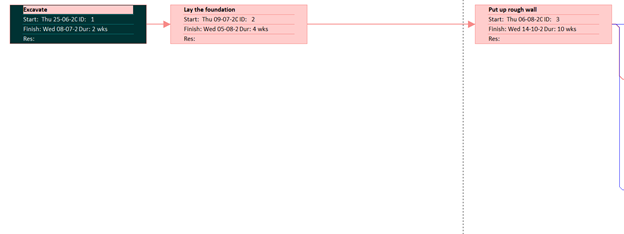
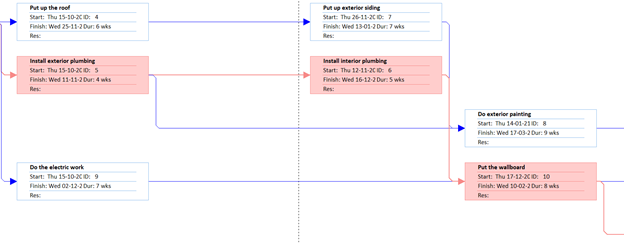
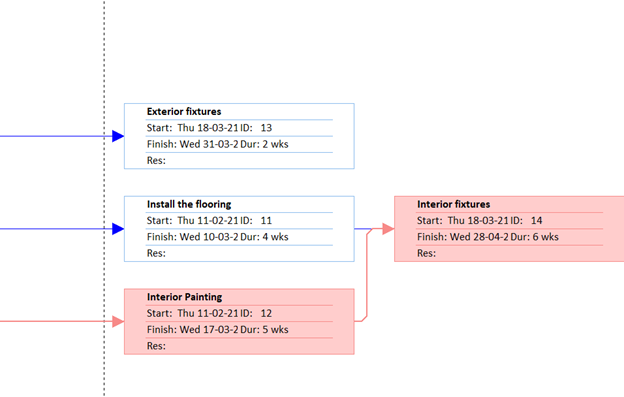
Figure 3: Network Diagram for Provided Plan
(Source: Created by Author)
In contrast to the ABC construction, the PM needs to develop a systematic framework of work sequence based on the allocated schedule to complete within 47 weeks. To ensure timely delivery, the PM has implemented a project crashing process to reduce time constraints. Based on the project network diagram, the PM firstly needs to perform excavation and foundation development activities individually to gain access for further development. Afterwards, roof installation, interior plumbing and exterior painting are done simultaneously to other distinct activities. Based on the given time of 47 weeks, the following network diagram has been developed and presented.
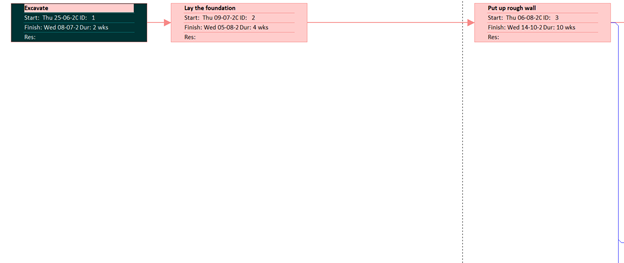

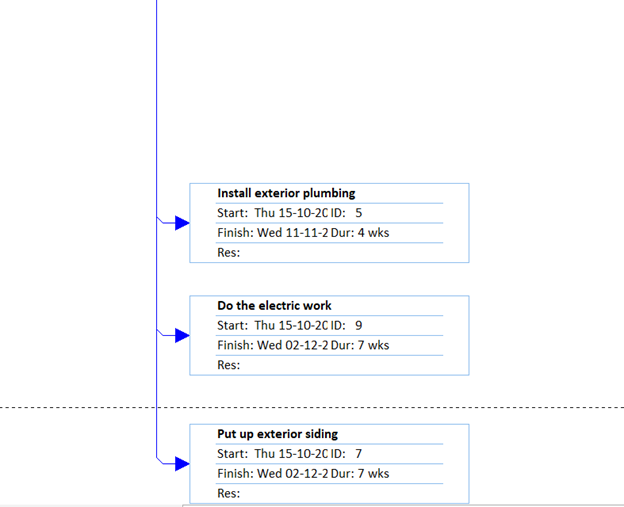
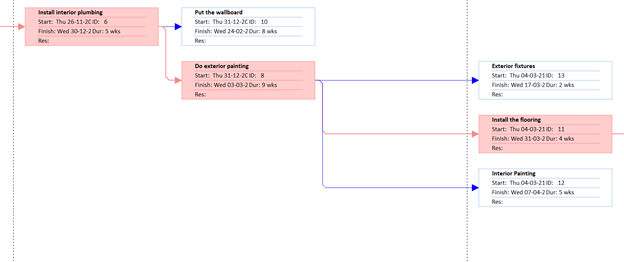
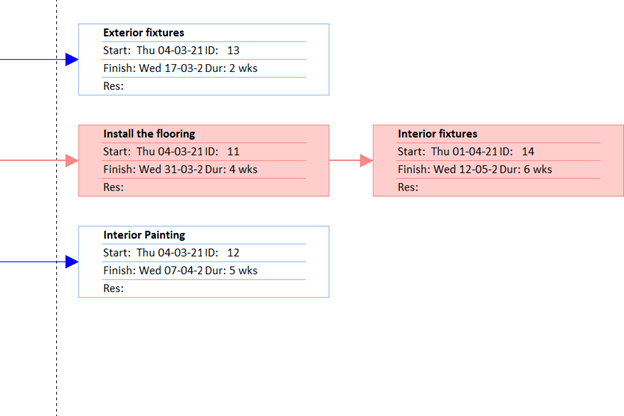
Figure 4: Network Diagram for Updated Schedule
(Source: Created by Author)
Project Schedule
Based on the current scenario of ABC construction, the PM must comply with industry-specific best construction practices to minimise time constraints. Critical path method refers to a systematic empirical framework of resources utilisation algorithm that allows scheduling project activities while identifying dependability, risk magnitudes and time estimations. In contrast to ABC construction, CPM will assist the PM to keep the project schedule efficient and continuous. However, as the manufacturing project must be completed within 47 weeks, the company is looking forward to completing the project within 40 weeks to receive additional incentives. Based on the project requirements the PM can implement a project crashing model as a schedule compression technique to shorten the project schedule. As the project encompasses multiple interdisciplinary activities, the PM needs to evaluate the normal critical path to identify critical activities while calculating incremental costs per unit time and availability of resources (Hu et al. 2016).
Based on the project criteria, various critical activities are interrelated and upholds distinct timeframes for completing specific tasks. However, to complete the project within 40 weeks, the PM must conduct parallel construction works to incorporate timely delivery. After the completion of the excavation, foundation and rough wall activities the PM can implement a project crashing mechanism to conduct roof installation and exterior plumbing activities to save 10 weeks timeline. After that, the PM can allocate adequate resources to complete installation of interior plumbing and put up exterior siding to save another 5 weeks timeframe. Afterwards, exterior painting and electrical taka can be done parallelly to save a 7-week schedule. After putting in the wallboard, the PM can again crash interior painting and installation of the floor to save the adequate time of 5 weeks by completing the takes within 4 weeks. Exterior fixtures and interior fixtures can also be performed after the completion of exterior painting to gain an extra schedule of 8 weeks. After the completion of the project, the PM can significantly reduce the project schedule by weeks, and the manufacturing plant can be completed within 47.
|
Activities |
Parallel Activities |
Saved Timeframe |
Total Time Required (Weeks) |
|
Excavation and foundation and rough wall |
None |
None |
16 |
|
Roof installation |
Exterior Plumbing and exterior siding, electrical works |
13 weeks |
10 |
|
Interior Plumbing |
None |
None |
5 |
|
Exterior painting |
Put up wallboard |
8 weeks |
7 |
|
Installation of floor |
Interior painting, exterior fixtures |
7 weeks |
4 |
|
Interior fixtures |
None |
None |
6 |
|
|
|
|
Total time – 47 |
Table 1: Project Schedule After Project Crashing
Based on the table presented above, the following Gantt chart has been developed. The sections in the Gantt Chart highlighted in red indicate the critical path and present the efficient development of the project within the provided time-frame.
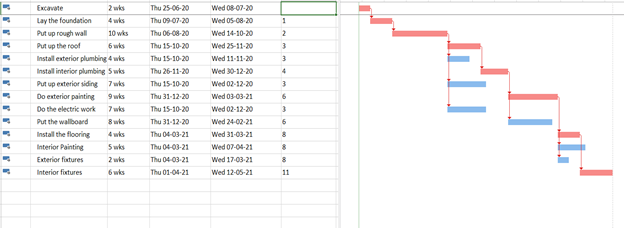
Figure 5: Critical Tasks for updated Schedule
(Source: Created by Author)
Reference List
Abdullah, A.L. and Saleem, F., 2016. The impact of ICT applications in the development of the business architecture of enterprises. International Journal of Managerial Studies and Research, 4(4), pp.22-28.
Agrawal, A.K. and Mittal, G.K., 2018. The role of ICT in higher education for the 21st century: ICT as a change agent for education. Multidisciplinary Higher Education, Research, Dynamics & Concepts: Opportunities & Challenges For Sustainable Development (ISBN 978-93-87662-12-4), 1(1), pp.76-83.
Ahmad, M. and Hasan, M.M., 2016. Minimization of Rework in Food Industry by Applying Pareto Chart and Cause Effect Diagram. Global Journal of Research In Engineering, vol- 1, pp( 02-07).
Ahmadi, A., Suparno, S., Suharyo, O.S. and Susanto, A.D., 2018. Time Scheduling And Cost Of The Indonesian Navy Ship Development Project Using Network Diagram And Earned Value Method (Evm)(Case Study Of Fast Missile Boat Development). JOURNAL ASRO-STTAL, 9(2), pp.87-106.
Attaran, M. and Gunasekaran, A., 2019. Consumer Goods and Retail Industry. In Applications of Blockchain Technology in Business (pp. 59-61). Springer, Cham.
bloomberg.com, 2019 Walmart Readies Introduction of Low-Priced iPad Rival Available at https://www.bloomberg.com/news/articles/2019-03-13/walmart-readies-introduction-of-low-priced-rival-to-apple-s-ipad [Accessed 24/06/2020]
Bottani, E., Centobelli, P., Gallo, M., Kaviani, M.A., Jain, V. and Murino, T., 2019. Modelling wholesale distribution operations: an artificial intelligence framework. Industrial Management & Data Systems, vol no. 2, pp( 13-23).
corporate.walmart.com, 2020 About us Available at https://corporate.walmart.com/our-story [Accessed 24/06/2020]
Erdil, A., 2018. EVALUATION THE INTEGRATING DIFFICULTIES-ISSUES FOR JUST-IN TIME AND ERP SYSTEMS IN TERMS OF QUALITY MANAGEMENT IN MANUFACTURING SECTOR: A CASE STUDY FOR AN AUTOMOTIVE ENTERPRISE IN TURKEY. CHANGING ORGANIZATIONS, p.111.
Heller, F., 2017. Technological innovation applied to walmart and tesco’s supply chain (Doctoral dissertation), vol -1, pp( 1-3).
Hu, X., Cui, N., Demeulemeester, E. and Bie, L., 2016. Incorporation of activity sensitivity measures into buffer management to manage project schedule risk. European Journal of Operational Research, 249(2), pp.717-727.
Jeong, W., Chang, S., Son, J. and Yi, J.S., 2016. BIM-integrated construction operation simulation for just-in-time production management. Sustainability, 8(11), p.1106.
Laureani, A. and Antony, J., 2018. Leadership–a critical success factor for the effective implementation of Lean Six Sigma. Operations management assignment Total Quality Management & Business Excellence, 29(5-6), pp.502-523.
Li, Y., Pan, E. and Chen, Z., 2017, August. Considering machine health condition in jointly optimizing predictive maintenance policy and X-bar control chart. In 2017 International Conference on Grey Systems and Intelligent Services (GSIS) (pp. 328-337). IEEE.
Lv, Y., 2019, February. Confucian People-Oriented Management—Wal-Mart as an Example. In International Conference on Application of Intelligent Systems in Multi-modal Information Analytics (pp. 791-798). Springer, Cham.
Martino, G., Fera, M., Iannone, R. and Miranda, S., 2017. Supply chain risk assessment in the fashion retail industry: An analytic network process approach. Int. J. Appl. Eng. Res, 12, pp.140-154.
Pandey, P.K., 2018. Role of Artificial Intelligence in Business. Economic Development of India, 1(1), pp.122-139.
Panigrahi, S.K., Kar, F.W., Fen, T.A., Hoe, L.K. and Wong, M., 2018. A strategic initiative for successful reverse logistics management in the retail industry. Global Business Review, 19(3_suppl), pp.S151-S175.
Ransbotham, S., Kiron, D., Gerbert, P. and Reeves, M., 2017. Reshaping business with artificial intelligence: Closing the gap between ambition and action. MIT Sloan Management Review, 59(1).
Reim, W., Åström, J. and Eriksson, O., 2020. Implementation of Artificial Intelligence (AI): A Roadmap for Business Model Innovation. AI, 1(2), pp.180-191.
Schmider, J., Kumar, K., LaForest, C., Swankoski, B., Naim, K. and Caubel, P.M., 2019. Innovation in pharmacovigilance: use of artificial intelligence in adverse event case processing. Clinical pharmacology & therapeutics, 105(4), pp.954-961.
Smith, J., 2019. Big Box Supermarkets (Walmart Supercenters). Increasing Access to Food: A Comprehensive Report on Food Supply Options, p.5.
thestreet.com, 2020 Apple's Corporate Culture Motivates Employees, Boosts its Stock Price Available at https://www.thestreet.com/how-to/apple-s-corporate-culture-motivates-employees-boosts-its-stock-price-13314263 [Accessed 04/07/2020]
Vasantham, M.K. and Sreedhararaj, S., Walmart Inc, 2017. Shard determination logic for scalable order and inventory management architecture with a sharded transactional database. U.S. Patent 9,659,079.
walmart.com (2020) Walmart, Available at https://www.walmart.com/ip/Kuwait-9781422213865/414079048 [Accessed on 21st June 2020]
Yunis, M., Tarhini, A. and Kassar, A., 2018. The role of ICT and innovation in enhancing organizational performance: The catalysing effect of corporate entrepreneurship. Journal of Business Research, 88, pp.344-356.












